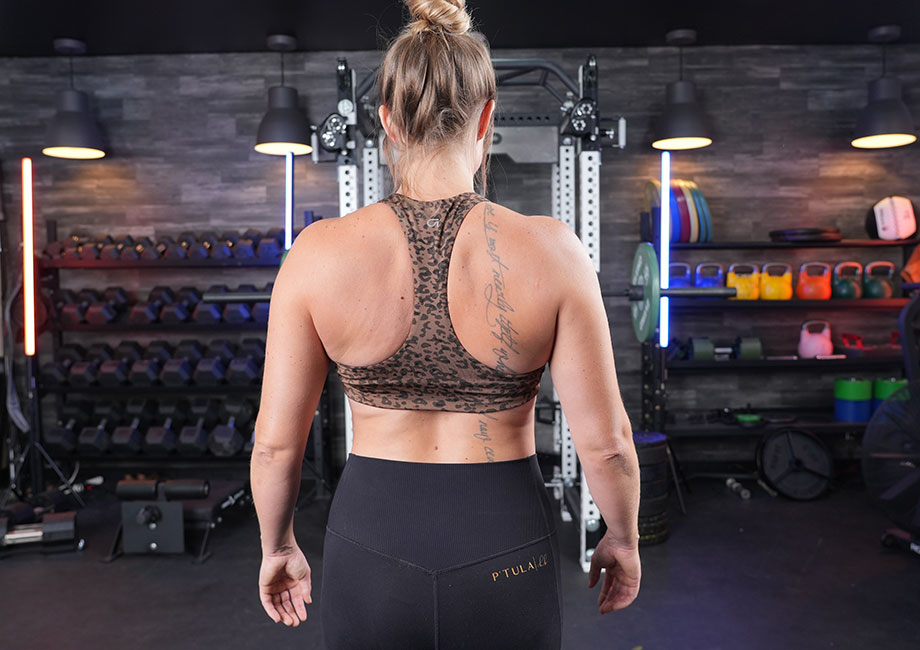We test and review fitness products based on an independent, multi-point methodology. If you use our links to purchase something, we may earn a commission. Read our disclosures.
A muscular upper back helps create that trademark V-shape that many people find aesthetically pleasing, but there are plenty of reasons to work out your upper back muscles beyond vanity.
Strong upper back muscles contribute significantly to posture, ensuring you can stand up straight and stay upright throughout your day. They enable various upper body movements, allowing your arms, shoulders, and neck to enjoy a wide and pain-free range of motion (ROM). And, speaking of pain-free, strong back muscles help stave off common conditions like lower back pain, which affects an estimated half billion people worldwide1.
RELATED: Lower Back Exercises
Amanda Capritto, CPT, CES, CNC, CF-L1, CSNC, and GGR Senior Staff Writer, shares some of the best exercises for upper back training, which should help you build back strength, muscle mass, and endurance.
The 14 Best Exercises for Upper Back
The best upper back exercises target all your upper back muscles using free weights, resistance bands, cable machines, and even a few bodyweight movements!
- Barbell bent-over row
- Single-arm dumbbell row
- Reverse fly
- Face pull
- Close-grip seated cable row
- Seal row
- Lat pulldown
- Pull-up
- Dumbbell YTW
- Landmine row
- Hang clean
- Shrug
- Snatch-grip deadlift
- Clean high pull
Barbell Bent-Over Row
Why do it: “The barbell row doesn’t just hit the upper back,” says Amanda Capritto, CPT, CES, CNC, CF-L1. “You’ll also receive muscle activation in posterior chain muscles like the glutes and hamstrings.”
How to do it:
- Grab a barbell, load it to the desired weight, and place it on the floor.
- Stand over the barbell with your feet shoulder-width apart. Push your hips back and bend your knees to reach down and grip the bar with an overhand grip.
- Push through your heels and extend your knees to stand up while holding the bar. Keep your back straight, core tight, and body angled towards the floor.
- Pull the bar toward your chest, pinching your shoulder blades at the top.
- Squeeze the contraction, then slowly lower the weight back down.
- Complete all reps, then put the barbell back on the floor.
RELATED: The Best Powerlifting Barbell
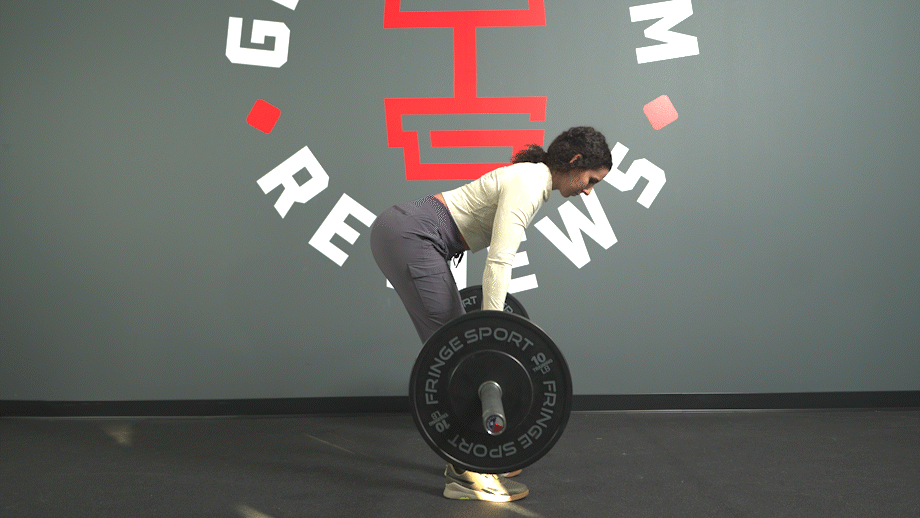
Single-Arm Dumbbell Row
Why do it: Using a pair of the best dumbbells instead of a barbell enables a greater range of motion. Plus, performing rows unilaterally lets you address bilateral deficits and muscle imbalances.
How to do it:
- Select your dumbbell and step forward with one leg to enter a split stance, leaning into the front leg and slightly bending the front knee. Hold the dumbbell at your side with your arm fully extended, placing the other arm on your front knee or on the back of a bench.
- Pull the dumbbell into your body, keeping your elbow close.
- Squeeze the contraction, then slowly lower the dumbbell back down.
- Complete all reps, then switch sides and repeat the set.
RELATED: Unilateral Exercises
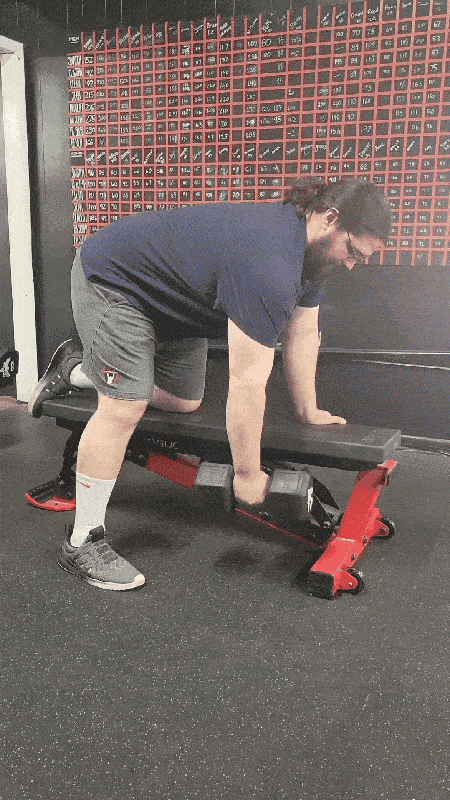
Reverse Fly
Why do it: The reverse fly exercise targets muscles like the traps, rhomboids, and rear delts via abduction rather than pulling. It’s a versatile exercise that can be done using dumbbells, resistance bands, the best cable machines for home gyms, or a pec deck machine.
How to do it:
- Select your preferred method of performing reverse flyes and adjust to your specifications. If using dumbbells, you’ll need to lean forward, similar to the starting position of the bent-over row. All other methods involve remaining upright.
- Holding the weights or handles in front of your midline, bring your hands back and away from the body, maintaining a slight bend in the elbow as you move.
- Continue until you feel your shoulder blades pinch, then squeeze the contraction.
- Slowly return to the starting position.
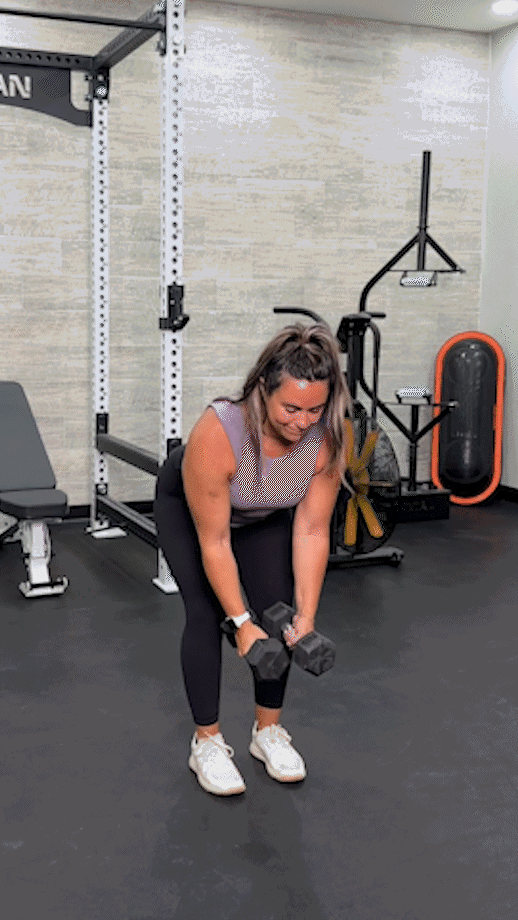
Face Pull
Why do it: “Face pulls hit your upper back muscles, posterior deltoids, and triceps too” says Amanda. “Using a resistance band or cable machine to do face pulls is also useful because it provides a different kind of resistance compared to free weight exercises.”
How to do it:
- Set the pulley of your cable machine to shoulder height and fasten the rope attachment.
- Grip the ends using an overhand grip and step back to create tension..
- Pull the attachment towards your face, separating the ends at the end of the range of motion. Pinch your shoulder blades and squeeze the contraction.
- Slowly return to the starting position.
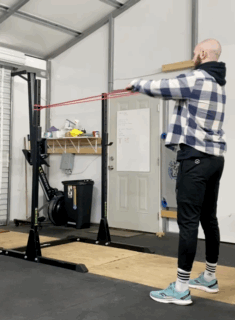
Close-Grip Seated Cable Row
Why do it: According to Dynamic Medicine2, the seated cable row produces the “highest levels of myoelectric activity in the middle trapezius/rhomboid muscle group” versus other back exercises, making it a great addition to your upper back workout routine.
How to do it:
- Fasten the V-handle to your cable machine and sit down, grabbing it with a neutral grip.
- Plant your feet on the machine and push back until your legs are nearly fully extended, keeping a slight bend in our knees. Your arms should remain fully extended as well.
- Pull the handle into your chest using your arms and back muscles.
- Squeeze the contraction at the end position, then slowly guide the handle back to the starting position.
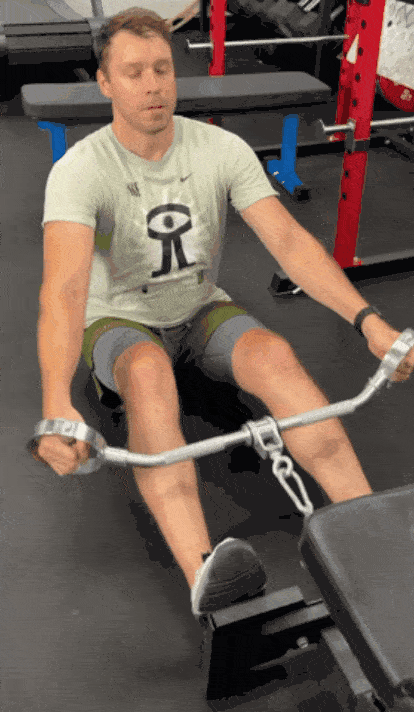
Seal Row
Why do it: The seal row is similar to the standard barbell row, but lying on an elevated bench or other sturdy platform eliminates the lower body muscles and forces the rowing muscles in your upper back and arms to do all of the work. There’s no cheating with seal rows.
How to do it:
- Grab a weight bench or other platform and lie prone, holding a barbell in front of your chest with your arms fully extended. Alternatively, you may use two dumbbells.
- Row the bar into your body, pinching your shoulder blades together at the top.
- Squeeze the contraction, then lower the weight back down slowly.
Note: You can also perform the seal row using an incline bench.
RELATED: Best Weight Bench
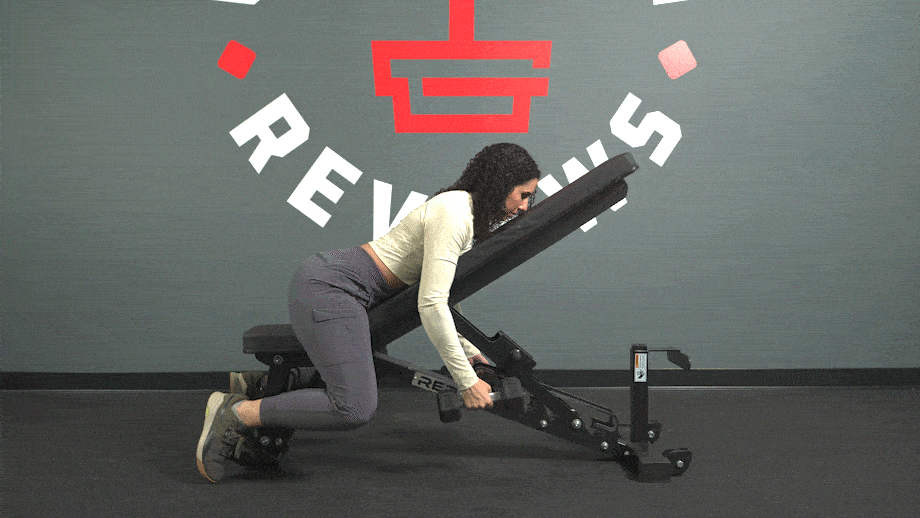
Lat Pulldown
Why do it: “Lat pulldowns provide activation in your upper back, lower back, biceps, and core, making it a comprehensive compound movement,” says Amanda. “It’s also effective for improving your pull-up performance, since many of the same muscles are used.”
How to do it:
- Adjust the lat pulldown machine to your specifications, including your desired amount of weight, preferred attachment, and leg holders.
- Grab the handle with a wide overhand grip, sit down, and secure your legs.
- Pull the handle into your chest, bringing your shoulder blades down and back as you move. Avoid rocking your body backward to use momentum for the movement.
- Hold the end position, squeezing the contraction, then slowly guide the handle back.
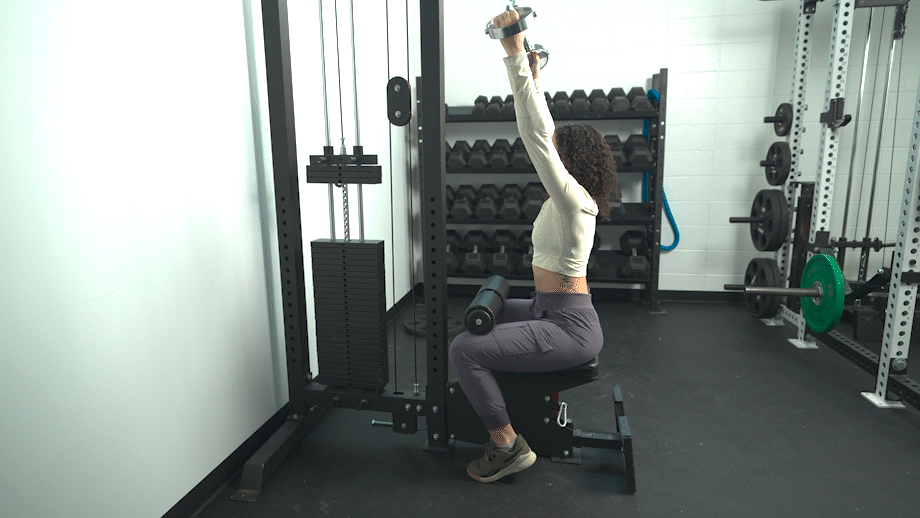
Pull-Ups
Why do it: Pull-ups are basically the king of bodyweight exercises, working various muscle groups throughout the body, building a strong upper back, enhancing core strength and stability, and burning calories.
How to do it:
- Grab a pull-up bar with an overhand grip and fall into a dead hang.
- From a dead hang, pull your body up towards the bar using your arms and back.
- Continue until your chin rises past the bar.
- Squeeze the contraction, then control your descent back into a dead hang.
RELATED: Best Pull-Up Bar
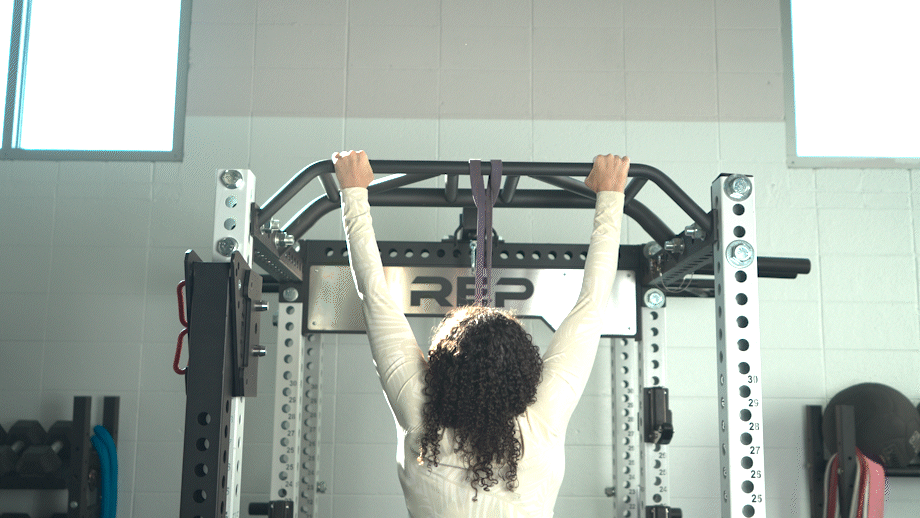
Dumbbell YTW
Why do it: Dumbbell YTW raises are a tad tedious, but the unique positioning of each engages different muscle groups. The Y hits your lower traps, lats, and erector spinae, the T hits your middle traps and rhomboids, and the W gets your infraspinatus and teres minor. It’s also a deceptively difficult exercise and will fire up your back muscles.
How to do it:
- You may perform this exercise sitting, standing, lying at an incline, or lying prone. Select your preferred starting position and two light dumbbells.
- Bring your shoulder blades down and back to pinch.
- Lift your arms up and out, keeping them straight, so that you form the letter “Y,” then bring them back down.
- Lift your arms straight out to form a letter “T,” then bring them back down.
- Lift your arms halfway, then bend your elbows to form 90-degree angles. This should create the “W” shape. Holding your perfect “W,” bring the arms up the rest of the way.
- Repeat as needed, cycling between your different shapes on each repetition.
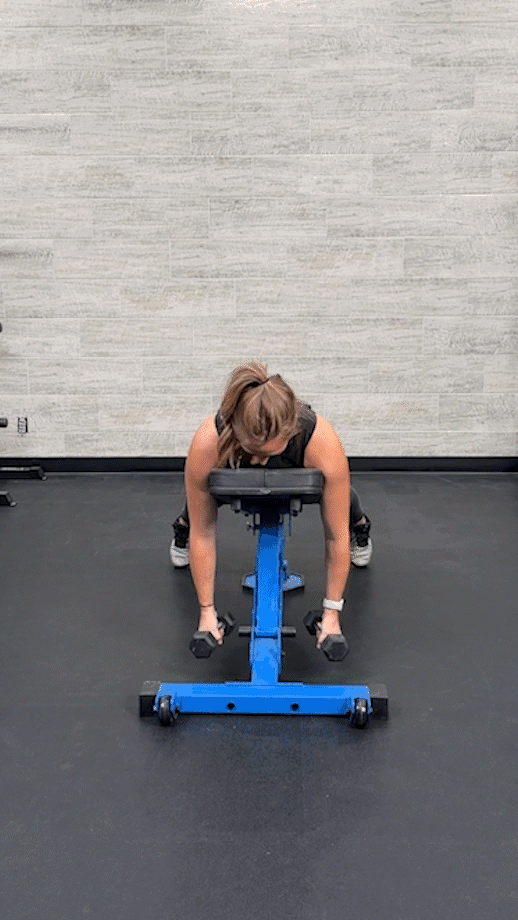
Landmine Row
Why do it: “Landmine, or T-bar, rows activate similar muscles as the regular row, but the positioning is much easier on the lower back,” says Amanda. “As a result, a lot of people are able to lift more weight when doing landmine rows versus regular rows.”
How to do it:
- Load the desired weight and stand straddling the bar with your feet shoulder-width apart.
- Reach down and grab the bar with a neutral grip (palms facing each other).
- Pull the bar into your chest, squeezing your back muscles at the top.
- Slowly lower the bar back down.
RELATED: Landmine Exercises
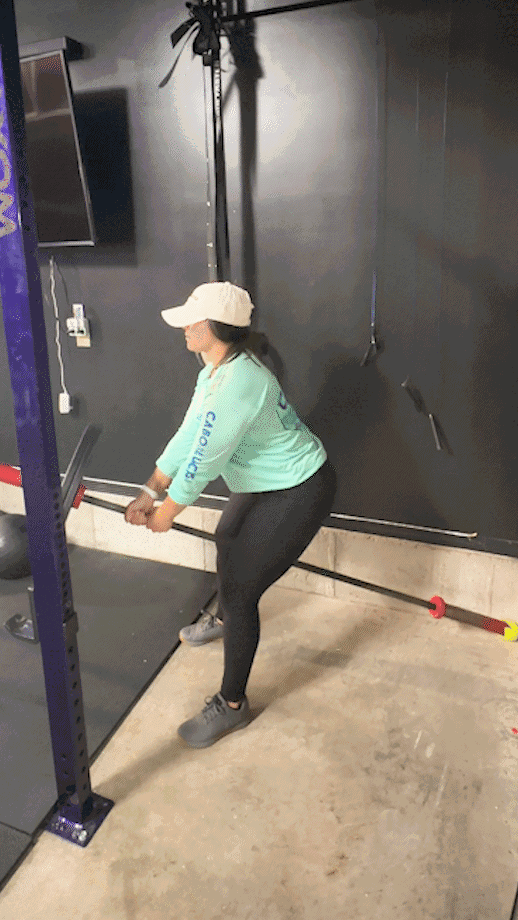
Hang Clean
Why do it: Cleans and clean variations are used frequently in CrossFit because they are a serious workout. The movement is a bit technical, but it works muscles throughout the back, upper and lower, as well as the core, glutes, quads, hamstrings, and calves.
How to do it:
- Grab an Olympic barbell and load it to your desired weight.
- Reach down and lift the barbell, holding it between your knees and waist (hang position).
- Slightly bend your knees, then drive through your heels and pull the bar to your chin.
- As the bar rises, push your elbows forward and underneath the bar to catch it. Dip again to catch it in a squat position and stabilize the catch from here.
- Once stabilized, extend your hips and knees to stand up fully.
- Slowly guide the bar back to the hang position.
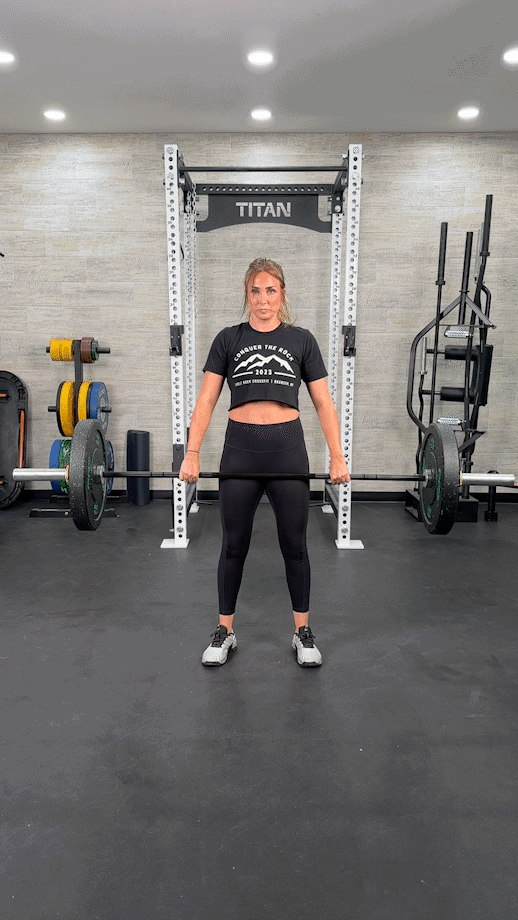
Shrug
Why do it: No exercise isolates the upper traps the way shrugs do. Shrugs are great for building muscle and strength in the trapezius and, in turn, contributing to a wider and pain-free range of motion for your head and neck.
How to do it:
- Choose your barbell, trap bar, dumbbells, or kettlebells and hold them with arms fully extended. You’ll want your feet shoulder-width apart, back straight, and core tight.
- Raise your shoulders to your ears using only your trapezius muscles.
- Hold the contraction, then slowly return to the starting position.
RELATED: Best Trap Bars
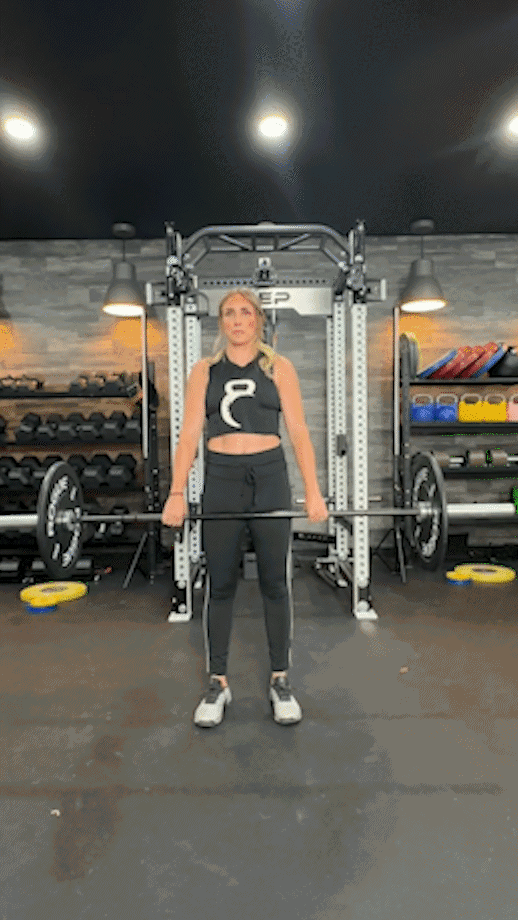
Snatch-Grip Deadlift
Why do it: “Implementing the snatch grip on a deadlift recruits the lat muscles during every phase of the movement,” says Amanda. “It reduces the range of motion, too, but the lat activation makes it a great exercise for building the upper back.”
How to do it:
- Stand over a loaded barbell with your feet shoulder-width apart.
- Push your hips back, bend your knees, and reach down to grip the bar with a snatch grip (wider than shoulder-width). Keep your back straight, core tight, and eyes fixed forward.
- Drive from your heels and extend your knees and hips to stand up, lifting the bar.
- Hold the end position, squeezing the contraction.
- Slowly lower the bar back to the floor.
RELATED: Deadlift Variations
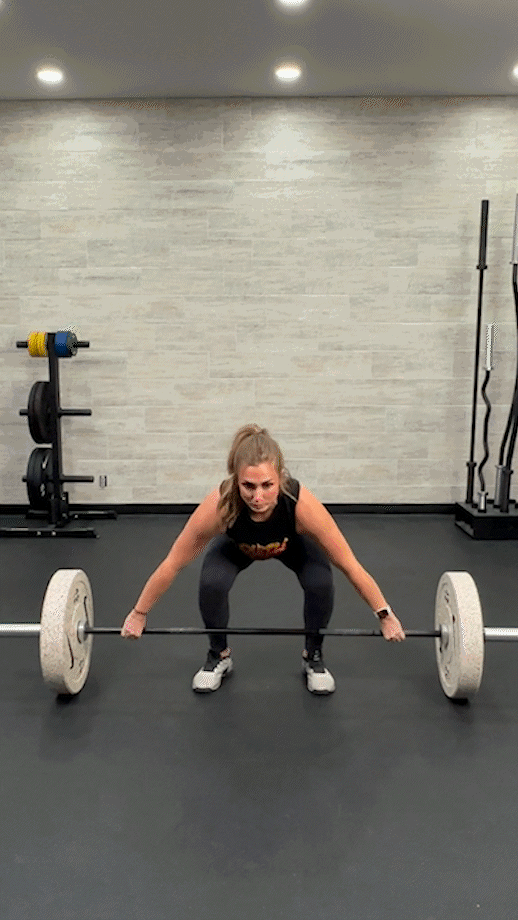
Clean High Pull
Why do it: The clean high pull marries the upper back muscle activation of the shrug exercise and the explosiveness of the clean.
How to do it:
- Load your barbell and deadlift it to the hang position.
- Bend your knees to dip slightly, bringing your chest forward and your hips back.
- Bring your hips forward quickly as you straighten the knees and pull up with your arms.
- Pull the barbell to chest height, letting it “float” momentarily before falling back down.
- Slow the bar’s descent as it falls, hinging forward again to accommodate its path.
- Return to the hang position, reset, and repeat the movement.
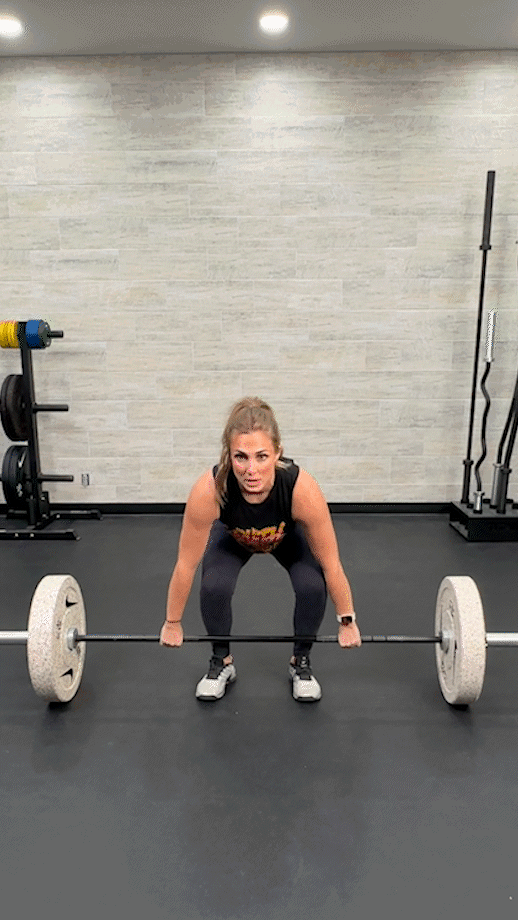
Expert Training Tips
There you have it—the best exercises for your next upper back workout; but how do you pull them all together into a cohesive workout that checks all the right boxes?
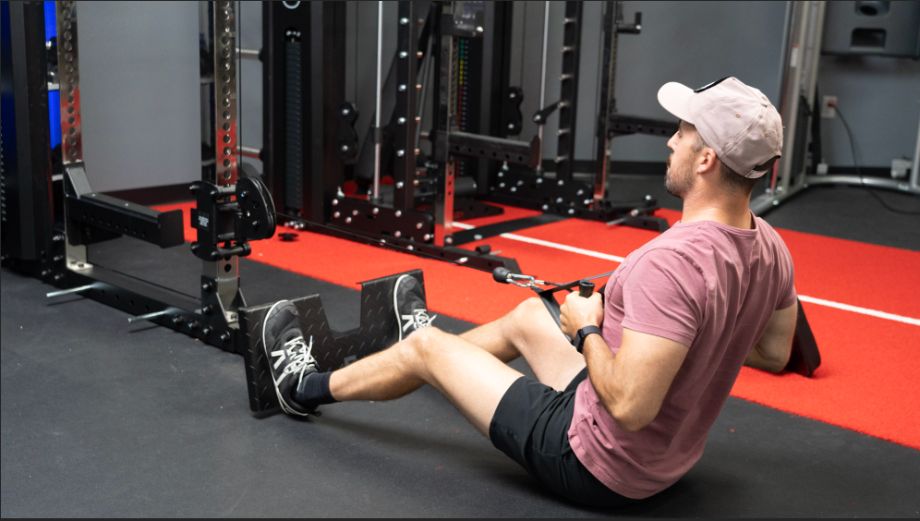
Amanda Capritto, CPT, CES, CNC, CF-L1, shares her top training tips for how to work these exercises into your routine.
- Start slow and light: Some movements, like shrugs, are super intuitive. Others, like hang cleans, are going to take loads of practice. Start out using lighter weights, if possible, and don’t rush the movement.
- Consult a professional: Online resources are fantastic for getting your feet wet, but working with a certified personal trainer (CPT) or other fitness professional will take your training to the next level.
- Mix methods and modalities: Don’t pigeonhole yourself into just free weight lifts, cable machine exercises, or bodyweight movements. Mix things up to alter the stimulus and stave off boredom.
- Singled out: Bilateral training is excellent for all-purpose fitness, but mixing in some unilateral movements like one-arm dumbbell rows will help you correct muscle imbalances and bilateral deficits. Use both for the best results.
How to Warm Up for Upper Back Exercises
You’ll want to kick things off with a proper warm-up if you want to finish with more upper back strength and muscle rather than more upper back pain!
“There are three things I like to include in a warm-up,” says Amanda, “and that’s dynamic stretching, mobility exercises, and muscle activation.”
Lumbar rotations, beat swings, pass throughs, T push-ups, and the world’s greatest stretch are all excellent additions to your upper back workout warm-up. Preceding your working sets with a few light warm-up sets helps get the blood flowing, too.
RELATED: Hip Flexor Exercise
Anatomy of the Upper Back
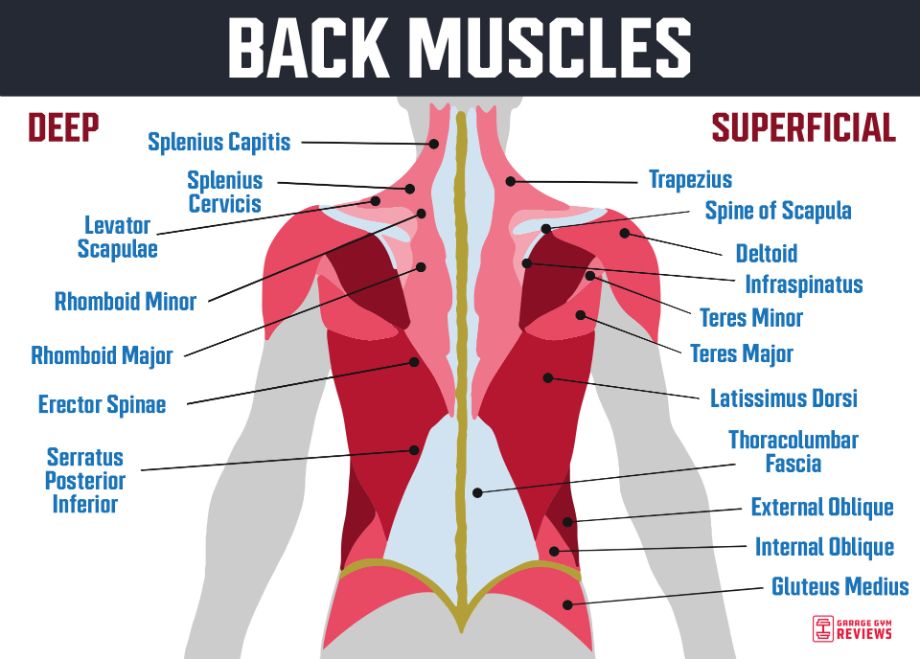
The upper back consists of several muscles:
- Latissimus dorsi: The latissimus dorsi3 is a large, flat muscle that stretches across the entire span of the mid-back region. It assists in pulling movements, shoulder extension, and, to some degree, breathing.
- Trapezius: Commonly abbreviated as the “traps,” the trapezius4 is a trapezoidal muscle that spans horizontally across the shoulders and vertically from the base of the neck to mid-back. It assists in good posture, neck movement, and stabilizing the spine.
- Rhomboids: The rhomboids5 are a muscle group consisting of two parallel bands, the rhomboid major and minor, that pass beneath the spine to connect the scapulae. They are important for stabilizing the shoulder girdle and enabling scapular retraction.
- Erector spinae: The erector spinae is a deep back muscle that stabilizes the spine and assists in good posture. It stretches from the base of the neck to the pelvic bone.
Together, these muscles are responsible for moving your upper extremities, including the head, arms, and shoulders, as well as stabilizing the spine and contributing to good posture.
So, it’s worth your while to work them out regularly to ensure you keep a healthy range of motion for your head and limbs, as well as staving off common conditions associated with aging, like back pain, neck pain, and shoulder stiffness.
Benefits of Upper Back Exercises
Spending some time focusing on your upper back muscle yields numerous benefits.
For example, increasing the strength and endurance of your back muscles helps them do their job of stabilizing the spine, helping you maintain a good, upright posture throughout your day. This is especially important for sedentary individuals, like office workers, who are most at risk for developing poor posture and other conditions associated with weak back muscles.
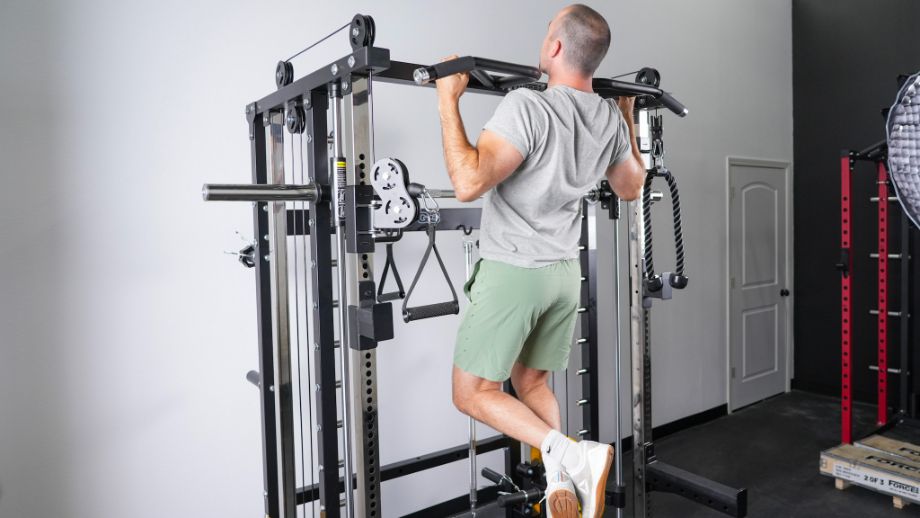
For those suffering from such conditions, including neck pain, shoulder stiffness, and back pain, studies show6 that exercise can help alleviate pain by up to 50% in some patients, providing relief and improving overall quality of life.
Working out your upper back muscles also means greater pulling strength and more muscle mass, which helps you outperform the competition in various sports and look damn good doing it. So, in addition to the many functional benefits of training your upper back, there are also aesthetic reasons.
Exercises for Upper Back: FAQs
How can I train my upper back at home?
Many of the upper back exercises we shared above can be performed right from the comfort of your home gym, provided you have a few free weights on hand.
Even exercises that suggest a cable machine or pec deck machine can be modified to use simple resistance bands, which most home gyms should have on hand anyway given the fact they’re inexpensive and take up virtually no space.
RELATED: Bodyweight Back Exercises
What exercises can help relieve pain in the upper back?
Our expert-suggested upper back exercises, like the rows, lat pulldowns, and pull-ups can help build strength, stability, mobility, and more, but they’re not guaranteed to relieve all upper back pain, especially if you’re injured or have a medical condition.
Upper back exercises should assist in reducing your risk of back injury, but, for greater pain relief, try working in some stretches (such as the hyperextension exercise) and, in severe cases, consult a healthcare professional.
How do I know if my upper back is strong?
“There are many ways to establish the strength of your upper back,” says Amanda Capritto, CPT, CES, CNC, CF-L1, and GGR Senior Staff Writer. “One of the simplest is to take a look in the mirror or just mentally check in with your posture. Do you hunch forward? Are you sitting up straight right now as you read this? If not, then you might have muscular weakness in your back and/or core muscles.”
No worries; a great workout plan will help address that poor posture issue, and, wouldn’t you know it, you have all the tools for that right here on GGR! Good luck out there!
References
1. GBD 2017 Disease and Injury Incidence and Prevalence Collaborators. Global, regional, and national incidence, prevalence, and years lived with disability for 354 diseases and injuries for 195 countries and territories, 1990–2017: a systematic analysis for the Global Burden of Disease Study 2017. The Lancet. 8 Nov 2018: 392.
2. Lehman GJ, Buchan DD, Lundy A, Myers N, Nalborczyk A. Variations in muscle activation levels during traditional latissimus dorsi weight training exercises: An experimental study. Dyn Med. 2004;3(1):4. Published 2004 Jun 30. doi:10.1186/1476-5918-3-4
3. Jeno SH, Varacallo M. Anatomy, Back, Latissimus Dorsi. [Updated 2023 Mar 5]. In: StatPearls [Internet]. Treasure Island (FL): StatPearls Publishing; 2023 Jan
4. Ourieff J, Scheckel B, Agarwal A. Anatomy, Back, Trapezius. [Updated 2023 Mar 11]. In: StatPearls [Internet]. Treasure Island (FL): StatPearls Publishing; 2023 Jan
5. Farrell C, Kiel J. Anatomy, Back, Rhomboid Muscles. [Updated 2023 May 16]. In: StatPearls [Internet]. Treasure Island (FL): StatPearls Publishing; 2023 Jan
6. Rainville J, Hartigan C, Martinez E, Limke J, Jouve C, Finno M. Exercise as a treatment for chronic low back pain. Spine J. 2004;4(1):106-115. doi:10.1016/s1529-9430(03)00174-8
Further reading

Barbells and dumbbells are most often seen in home gyms, but Mutt Bars are similar in that they’re weighted exercise, but combine the functionality of a multi-grip specialty bar with fixed weight. Although I don’t think they’re a perfect replacement for incrementally loadable Olympic bars, they are a ton of fun and offer a unique way to do presses, curls, rows and other movements. Read more

Looking for some killer moves to spice up your next leg day? Try our quad-crushing leg extension alternatives and feel the burn! Read more

Check out the best protein bars for diabetics, focusing on high protein, low sugar, and high fiber to help regulate blood sugar and keep you satisfied. Read more

Wondering how to sell a used treadmill? We have a number of tips to help you score cash for your machine. Read more

